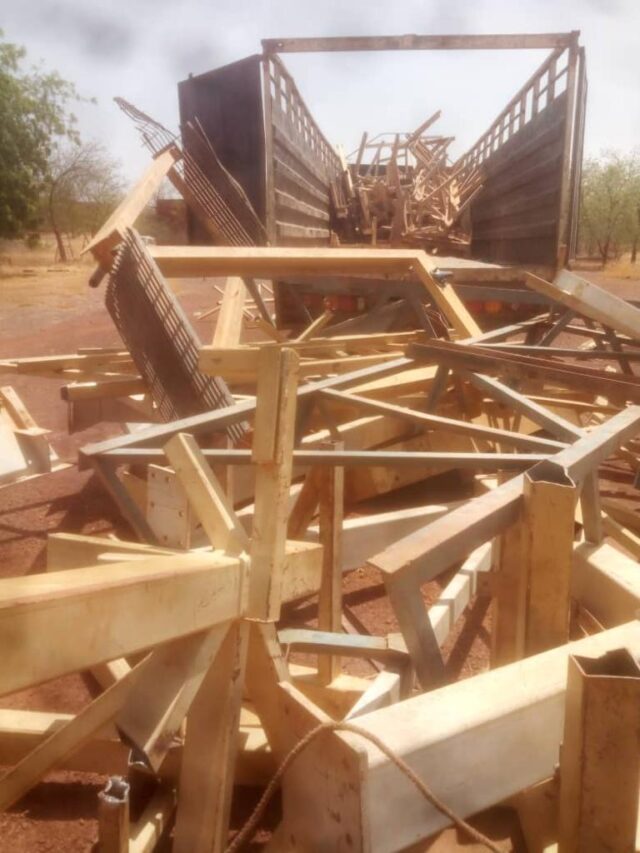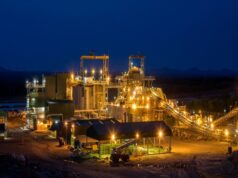- Kalsaka, a mine in ruins
- The risks of looting were known to local and national authorities
- The tumultuous history of Kalsaka
The scene at the Kalsaka mine site is desolate. Doors and windows of buildings torn off. The mining installations have been dismantled, debris scattered on the ground, and many gold miners are searching for gold on the perimeter. The Kalsaka mine, located in the province of Yatenga, in the northern region, is in ruins on this day in April 2023.
A local source informs that trucks came from Ouagadougou to take the iron. To dismantle this material, they used large generators and welding equipment to cut the large irons, in full view of everyone.

It all started with the Baladji Group taking over the operating licence in 2020. The new contractor was never able to carry out the mining activities. The workers’ salaries were suspended, especially the security guards. They ended up deserting the site. After their departure, looters raided the site. The local police made arrests at the time. The lack of security and the risk of looting were therefore known to the local and national authorities.
The ransacking of the mine’s facilities and the looting of equipment in 2023 came as no surprise to many local people.
The Kalsaka licence is currently held by Akoliya Patel’s Baladji group from India. The latter also held the Inata licence before it was withdrawn by the government.
In the case of Kalsaka, the Ministry of Mines had prepared a withdrawal file for non-compliance with the law in August 2022. The Mining Code specifies that the permit can be withdrawn after 2 years of production stoppage without authorisation.
But Akoliya Patel had already taken the Burkinabe state to court following the withdrawal of Inata’s licence. The government has chosen to be cautious while it waits to find out what happens to the Inata case.
Kalsaka has a long history. The most recent dates back to November 1999, when the consortium Cluff Mining LTD (West Africa) and Imar-B signed a mining convention with the Burkinabe state for the exploitation of the Kalsaka gold mine. On 4 August 2004, the mining permit was granted for an area of 25 km2. The permit expires on 4 August 2024. The mine officially started production on 30 October 2008 for an initial period of 6 years.

This consortium subsequently sold the mine to the Amara mining group. However, Kalsaka experienced cash flow difficulties and was no longer able to honour its debts. In 2011, its production, estimated at 2,447.8 tonnes, fell to 1,841 tonnes in 2012. It fell to 1,438 tonnes in 2013. This drop in production was compounded by the fall in the price of gold during this period.
Faced with all these financial difficulties, Amara Mining officially stopped its activities in 2013 before moving to Côte d’Ivoire, putting 398 employees out of work, including 361 national employees and 37 non-nationals.
Amara Mining, which had paid 1.6 billion FCFA into the site rehabilitation fund, sought government support for the rehabilitation of the site in vain. Tired of waiting for the government’s response, Amara Mining put the workers it had retained out of work, particularly the environmentalists and security guards, leaving an environmental and ecological disaster. The resumption of the licence by Baladji, which had given hope for the resumption of activities, remained at the project stage. Baladji will never be able to restart the machines.
Kalsaka should be a priority for the transitional government. Because of its geographical location, the northern region is plagued by terrorism and this site could be used to finance acts of terrorism. The Kalsaka site urgently needs to be secured, properly withdrawn and a new owner found.
Pierre Balma
#Mines_Actu_Burkina










